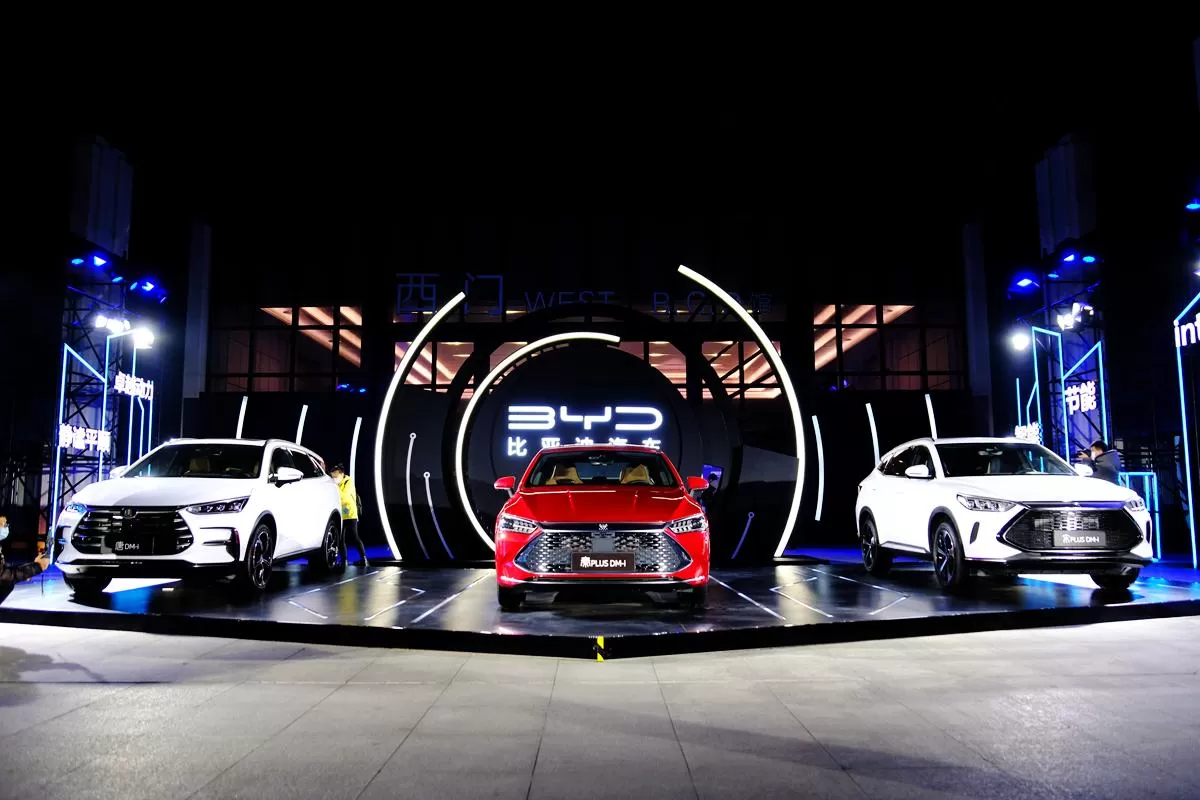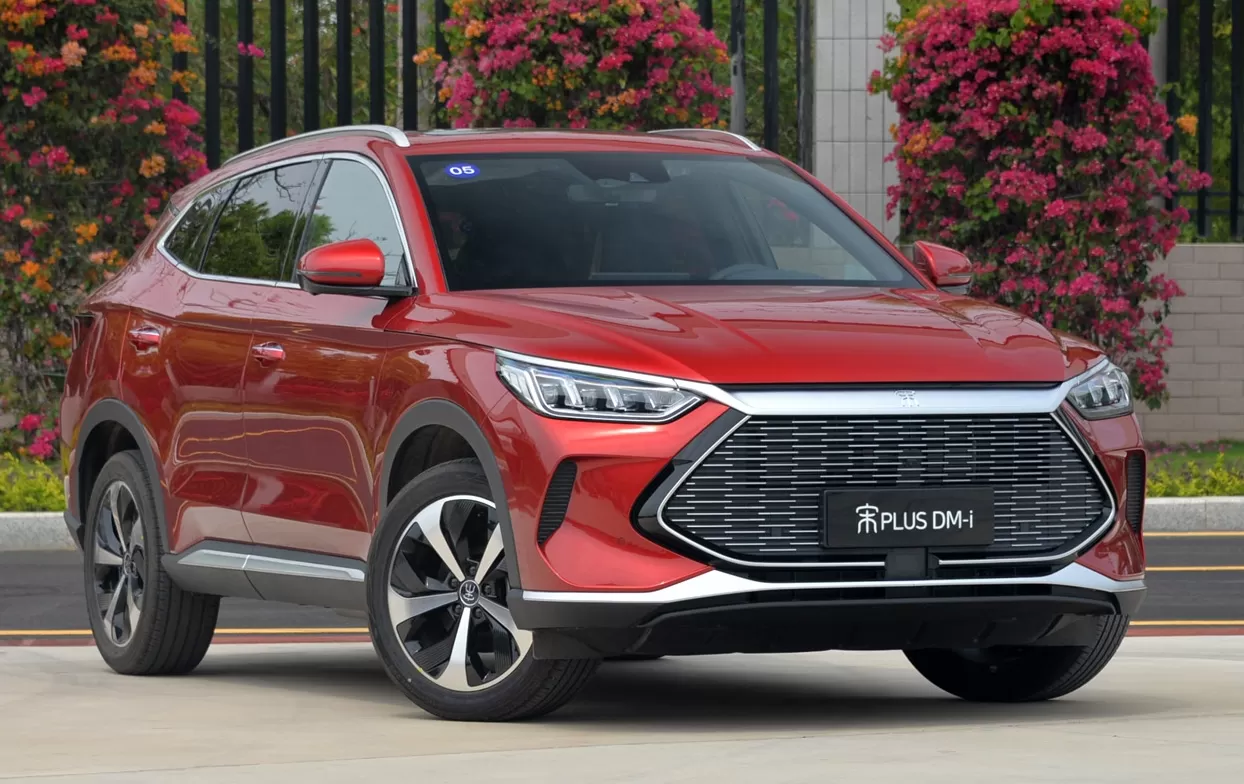Since its launch in March this year, BYD’s DM-i models have been on the market for six months, yet their popularity remains high. With over 100.000 orders, there are no cars available for immediate delivery, and the average wait time for delivery is over three months for the Qin PLUS DM-i, Song PLUS DM-i, and Tang DM-i models.
Feedback from friends, family, and online users suggests that many people are still interested in purchasing the DM-i. However, due to the long waiting period and lingering doubts about the DM-i, many potential buyers are hesitant. To help clarify these concerns, we’ve compiled a list of the top 10 questions about BYD DM-i. After reading this, you may have a clearer understanding.

Question 1: Is BYD’s DM-i technology mature?
DM-i is not a brand-new technology; it actually evolved from BYD's DM technology. BYD introduced its first-generation DM technology in 2008. debuting in the F3DM. Despite not becoming widespread in the mass market due to technical and cost control challenges, it was a pioneering hybrid technology for Chinese brands, even earlier than Honda’s i-MMD hybrid (2010).
Fast forward to 2013. when the second-generation DM technology was launched, achieving less than 5-second acceleration from 0 to 100 km/h, full-time electric four-wheel drive, and fuel consumption below 2L per 100 km. This is known as the “542” system. The third-generation DM technology came out in 2018. featuring a BSG motor and enabling P0+P3+P4 (three motors with four-wheel drive). This improved both performance and operating efficiency.
Question 2: What is the difference between DM-i and DM-P hybrid systems?
While both are plug-in hybrids, DM-i focuses more on fuel efficiency, while DM-P emphasizes performance. For example, the Tang DM-i has slightly weaker power, but it can achieve fuel consumption of 5.3L/5.5L per 100 km in a low-charge state, which is hard to achieve in other DM models.
On the other hand, the strength of the Tang DM lies in its power performance, evident from its 0 to 100 km/h acceleration in just 4.3 seconds. The choice between them depends on your budget and driving needs.

Question 3: How does DM-i technology work?
DM-i relies on three core components, as seen in the Qin PLUS and Song PLUS DM-i. First, the Xiaoyun 1.5L plug-in hybrid engine with a thermal efficiency of 43.04% (Tang DM-i uses a 1.5T engine with 40% thermal efficiency).
Second is the EHS hybrid system, which has two motors—one for power generation and one for driving the wheels.
Third is the DM-i super hybrid blade battery, which provides power to the driving motor and stores energy released by the engine.
With this foundation, the DM-i works in two modes. One is the EV mode, where the vehicle operates purely as an electric vehicle, with the battery directly powering the driving motor.
The other is the HEV (hybrid) mode, where the three core components collaborate. This can be divided into three scenarios:
1. At low to medium speeds, the engine powers the generator to produce electricity, which is combined with battery power to drive the motor. This is similar to the range-extender mode in the Li Auto ONE.
2. At higher speeds, both the engine and motor drive the vehicle. If the engine generates excess electricity, it charges the battery.
3. During high-speed acceleration, the engine directly drives the vehicle.
Question 4: What is the difference between BYD’s DM-i and Honda’s i-MMD hybrid systems?
From a technical perspective, BYD’s DM-i and Honda’s i-MMD hybrids are similar. Both aim to minimize engine use and maximize electric motor use. Even when the engine is driving, it operates within its most efficient range (Honda’s hybrid engines have thermal efficiencies of 41% for the 2.0L and 40.5% for the 1.5L engines).

However, the main difference is that BYD’s DM-i is a new energy vehicle (NEV), allowing for external charging, green license plates, and exemption from purchase taxes. Honda’s i-MMD is a fuel-efficient model, not classified as a new energy vehicle, and cannot run purely on electric power for long distances.
Question 5: Is the DM-i’s fuel consumption really as low as advertised?
Yes, during a test drive of the Song PLUS DM-i and Tang DM-i, the data supported the claims. For instance, the Song PLUS DM-i (110 km version) showed a fuel consumption of 4.9L/100 km after the battery was depleted, which is close to the official figure of 4.5L/100 km.
While fuel consumption may vary based on driving habits and conditions, feedback from car owners and other media tests confirms that low fuel consumption is a reliable feature.
Question 6: Can I drive the DM-i as a purely gasoline-powered vehicle without charging it?
Yes, many buyers use plug-in hybrids as gasoline-powered vehicles, and the DM-i is no exception. Even without charging, its fuel consumption is lower than that of regular gasoline vehicles.
However, charging is necessary to achieve the ideal cost-effectiveness, as using electricity is cheaper than using gasoline alone.
Question 7: Can BYD DM-i be charged using a household socket?
Yes, when purchasing a BYD DM-i, a portable 10A, 1.6kW charging gun is included, allowing for charging using a 220V household outlet. For example, the Qin PLUS DM-i 55 km version has an 8.32 kWh battery, which takes around 5.2 hours to charge fully using a 1.6 kW charger.
For the 120 km high-end version, a 16A 3.3kW home charger is also available (costing an additional 2.000 RMB). This would take about 5.5 hours to fully charge the 18.32 kWh battery.

Question 8: Which DM-i electric range version should I choose?
All three DM-i models currently on sale offer two electric range options. The longer-range version is more expensive, features a larger battery, and offers slightly better acceleration (though the difference is minimal). Additionally, the longer-range version supports fast charging, while the shorter-range version only supports slow charging.
If charging is inconvenient and you intend to use the vehicle mainly as a gasoline car, the shorter-range version is sufficient. If charging is accessible, the longer-range version with fast charging is more suitable and will save you more in the long run.
Question 9: Can the DM-i fast-charging adapter be shared?
Currently, the Song PLUS DM-i and Tang DM-i long-range versions come with a fast-charging adapter, which is required for fast charging. Some BYD DM owners have asked whether this adapter can be shared with other models.
The answer is no. BYD’s fast charging is only available for the long-range DM-i versions, and other plug-in hybrid models do not support it. According to BYD’s technical staff, adding fast charging to DM models is possible but would cost around 20.000 RMB for a full upgrade, which many might find too expensive.

Question 10: Is the lifetime warranty on DM-i’s three-electric system real?
Yes, for the three-electric system (battery, motor, and electronic control), BYD offers a lifetime warranty, meaning any faults or damages under normal use will be repaired or replaced for free, as long as certain conditions are met (e.g., the vehicle is non-commercial and owned by the first buyer).
One controversial condition is the clause that terminates the lifetime warranty if the vehicle exceeds 30.000 kilometers within any consecutive 12-month period. This could cause "mileage anxiety" for owners who drive frequently or commute between cities. However, even if you exceed 30.000 km, you can still enjoy an 8-year or 150.000 km warranty on the three-electric system, with a lifetime warranty on the battery cells.
Final Thoughts
Have these top 10 questions helped clear up your concerns? If you still have questions about BYD DM-i, whether technical or practical, feel free to follow “Cheyu Wujian” and leave a comment. We’ll explore and discuss them together!






